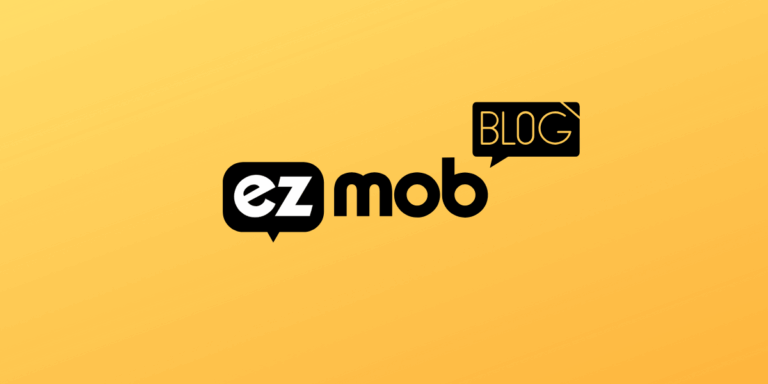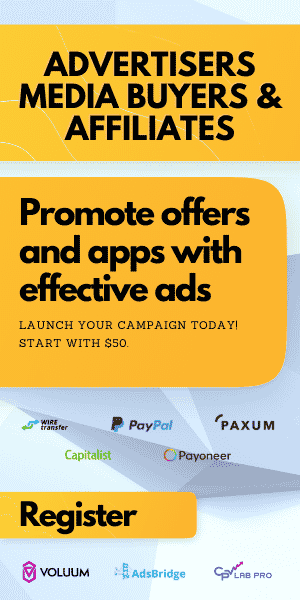
The Benefits of Self-Serve Advertising Platforms
Self-serve advertising platforms provide unlimited access to premium traffic sources giving the clients, advertisers, affiliate marketers, or media buyers, a rich interface where they can manage their ad campaigns.
In this post, we will showcase the benefits of self-serve advertising platforms and why said platforms are becoming the mainstream methods for promoting affiliate offers, direct deals, and brand advertising.
Table of Contents
What is a Self Serve Advertising Platform?
Back in the day, meaning the early 2000s, ad serving technology was still in its infancy, and many features that are taken for granted today were not even on the roadmap. Ad networks used to have account managers communicating daily with you, understanding your campaign’s objectives and what makes you a happy client. Then those ad network managers would go and communicate your needs to ad operation specialists who would carefully onboard your campaign on their ad servers, you would then get some sort of excel report with your daily spend and what sort of results you got. Needless to say, that report always had less than what you were interested in getting.
Self-serve advertising platforms are any platform that allows advertisers to configure their traffic needs and purchase online ad campaigns without interacting with a human sales rep or publisher.
Self-serve ad networks range in their technological features, publishers that are connected with them, and a load of added opportunities that are transparent to their users and ensure smooth campaign operations.
Self-Serve ad networks are another step in the evolution of ad networks that understood a few things, firstly, advertisers are impatient, as they should be, opportunities for media buyers can come and go in a matter of days and we don’t have the time to sit on our hands and wait for an account manager to come back from vacation or get around to taking care of our account if we’re not a major spender. Users prefer to get the control of what they deem is important to them instead of having someone else do it for them, as the saying goes “if you want to do something right, better do it yourself”.
This might not solve everyone’s problem, agencies might prefer managed accounts, accounts where the ad network assumes the responsibility of hitting certain KPIs and goals for the agencies’ advertisers. Still, agencies do expect the same type of transparency that self-serve ad platforms provide their direct client’s detailed reporting interfaces, insights, and good communication with the ad network.
What is the difference between Self-Serve Advertising Platforms and DSPs?
A DSP is a demand-side platform, it’s similar to a self-serve ad platform in the way that it allows users to configure their campaigns, get transparent reporting and even get the support they need. Doesn’t sound too different from a self-serve ad platform, does it?
The difference comes with the inventory and how much control you have over it when you work with either a self-serve ad platform or a DSP. DSP will allow you more transparency with their supply-side or the traffic sources they are connected with, while self-serve advertising platforms will keep you within their ‘walled garden’ of publishers they are connected with.
Let’s take a familiar example like Google ads, Google ads are by definition a self-serve ad platform that allows you to display your ads across Google’s search engine and display network, it even allows you to eliminate placements you’ve received traffic from and optimize your campaigns with very transparent reporting, it does not, on the other hand, allow you to integrate your campaigns into external traffic sources, unlike Google’s Display & Video 360 which will allow you fuller control of the traffic sour es and being able to introduce new traffic sources to the mix.
What type of DSPs are there?
Using the example above, there are still more for us to drill into to fully understand what type of DSPs are available, here are a few categories we can use to segment different DSPs.
- Self-Service advertising platforms allow to set up and launch campaigns without any human interactions but are not technically DSPs since the users do not deep control of the traffic sources they are connected with.
- Self-service DSPs will allow advertisers to manage their campaigns similarly to self-serve ad platforms but also enable their clients to hook up new sources of traffic to their technology, usually the DSP will already be integrated with these traffic sources and facilitate that integration.
- Full-service DSPs are the same as self-service DSPs but everything goes through a team of professionals who operate the DSP technology on behalf of the advertiser client.
- White-label DSPs offer clients to ‘own’ the platform, rebrand it and use the technological tools to make their own integration with traffic sources, and even offer access to other advertisers to partake in media buying.
What are the benefits of self-serve advertising platforms?
Full control of your campaigns
Self-serve advertising platforms will allow you to create and manage your campaigns as you want. Today the norm is the users have the tools and the transparency to do the job. It allows the advertising platforms to scale the number of clients they receive and allows users to get on with their campaigns without waiting for anyone.
Transparent advertising
When you’re given the opportunity to control your campaigns you also require the tools to make it work, that’s why self-serve advertising platforms will provide you with a detailed granular reporting interface that will allow you the answers you need as your campaign is spending.
Campaign measurability of effectiveness can be increased depending on the reporting interface and groupings offered by the platform.

Self-serve advertising platforms work 24/7
Usually to trigger a pop-up ad network’s ad a user would need to show signs of activity like clicking a page and then also scrolling down on the page, which should trigger the popup or popunder ad to be visible to the user. Once users click on the popup ad they will be redirected, via the popup ad networks ad server, to the advertiser’s tracking link with all the submitted tracking parameters.
How to choose the best self-serve advertising platform for your business
There are several factors you need to mind when you look for a self-serve advertising solution, for either publishers or advertisers.
Advertisers who want to maximize their campaigns and generate more conversions should consider the sources of the traffic of the self-serve ad platform they choose, the reporting metrics offered (and how often reports are updated), the ad formats available to them, and any automation tools they can use to maximize their campaigns.
Publishers on the other hand might care less about reporting since they are very familiar with their inventory but instead focus on. the type of campaigns the platform accepts, which verticals make it the network it is, and what sort of content guidelines it has for advertisers or how its creative approval is done.
EZmob is a self-serve advertising platform you should check out, we hit all the check marks brought to you in this review such as transparent reporting, monitored publisher inventory, global traffic, and full control of your advertising campaigns with our self-serve advertiser interface.
Read more reviews and articles
Learn how to setup popunder campaigns and more about campaign management on EZmob’s Helpdesk



